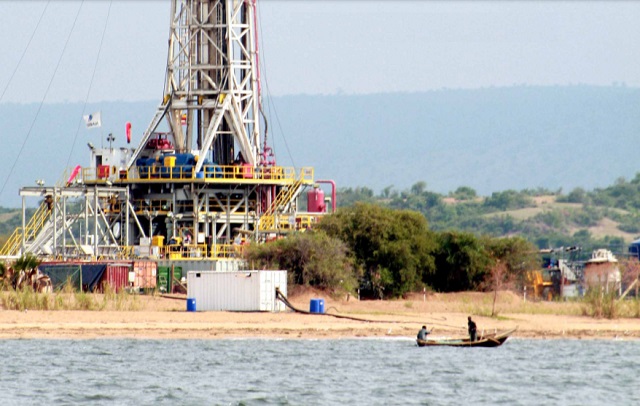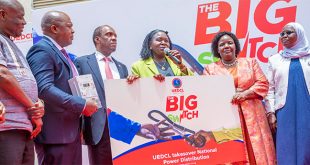
Kampala, Uganda | THE INDEPENDENT | As oil companies prepare to extract oil out of the ground, the next concern is Lake Albert’s water levels and fears that communities around the Lake could be denied access to the water resources.
While everyone is eagerly waiting to see out of the ground, there concerns that oil production could have a heavy toll on Lake Albert’ water resources.
It is expected CNOOC Uganda Limited and Total E&P could draw much more water from Lake Albert with planned developments and the King Fisher and Tilenga projects.
Water is an integral element of in Oil and gas production value chain or resource development. It is used in oil extraction, refining and processing, and transportation.
CNOOC Uganda Limited’s Environmental Social Impact Assessment(ESIA) Report said a water intake station will be constructed on Lake Albert to draw water for its project’s needs.
The water intake station according to the ESIA will be pumping an estimated 390 m3 of water per hour. It is that the average daily water demand at the Central Processing Facility will be approximately 100 m3/day. The estimate excludes water needed for domestic requirements at construction camps.
Some studies have indicated that over 750 billion liters of water could be extracted from Lake Albert alone over the twenty-year period of oil production.
No estimates have been given for the amount of water that will be drawn by Total E&P which plans to drill boreholes as part of its plans to water is wells and pipelines. On average, at global level, 3 to 5 barrels of water are produced for every barrel of oil produced.
CNOOC plans to use horizontal drilling method to extract oil from Lake Albert. While horizontal drilling is known for increased production efficiency, and a reduction in the number of wells to be drilled, a number of studies have found that it is more water intensive than vertical drilling.
Apart from the water levels, a number of civil society actors expressed fears that that CNOOC’s activities could impact on ground water quantity, in the area, lead to contamination of ground water among others.
The report suggested the construction of a water balance facility to monitor all water intake and discharge volumes and quantities as part of the mitigation measures.
But some of the participants at the just concluded King Fisher Development Project ESIA public hearing were seemingly not satisfied with the mitigation measures suggested in the report.
Ntoroko District Chairperson, Timothy Kyamanyua expressed said communities around Lake Albert could negatively impacted when huge volumes of water are drawn during oil production.
The Buhuka area on shores of Lake Albert is home to thousands of fishermen and cattle keepers that have been depending on the Lake for livelihoods. CNOOC is planning a range of production facilities in the same area. Opio Christopher is one of the refinery affected persons. He spoke at the public hearings in Kikube and Kabale.
Opio is mindful of the likely conflict that could arise between Uganda and Democratic Republic of Congo over the shared transboundary Lake.
He thinks the Environmental Social Impact Assessment report that may be approved by National Environment Management Authority should have been clear on the matter.
Petroleum Authority’s Director for Data Management , Dr. Joseph Kobusheshe told URN in an interview that all effort are being taken to ensure a balance between water needed for the oil and gas development and other economic activities dependent on Lake Albert and George.
Fear of Pollutants to the Lake
There has also been a concern about the potential increase in waste nuisance including heavy metals to the Lake and its surroundings. Water and Environment Sector Performance Report 2018 said heavy metals are often common in crude oil and drilling fluid that is used in oil exploration and production.
It said water samples from the Albertine Graben indicated high concentrations of some of the heavy metals. Some of the metals identified in the report included; cadmium (Cd), chromium (Cr), lead (Pb), arsenic (As), copper (Cu), manganese (Mn), zinc (Zn), cobalt (Co), aluminium (Al), mercury (Hg) and iron (Fe). Some of the metals according to the report were carcinogenic in nature.
The report warned that high concentration of those metals in drinking water will pose a health risk to the local communities in the Albertine Graben.
Oil companies were urged to put in place adequate waste management facilities to prevent pollution of drinking water for humans and animals with the toxic metals.
The report also recommended that relevant government agencies enforce relevant waste management regulations in the Albertine Graben to minimise pollution of the water resources and the environment.
The Directorate of Water Development was tasked to carry out comprehensive assessments of water resources in the oil and gas regions to establish the exact possible causes of heavy metal contamination and address them. It is not clear whether the assessment was carried out.
Directorate of Water development explains
The Directorate of Water Development’s Principle Water Officer, Edward Martin Rwaninda said there are genuine concerns about the volumes of water to be used in the Oil and gas developments. He revealed that there is an ongoing study to assess the impact of water that is to be used in the oil and gas sector in the Albertine.
Rwaninda says through modeling, they have found that water usage by the oil and gas sector from Lake Albert is currently estimated about zero percent but could rise to seven percent during development and production stages.
*****
URN
 The Independent Uganda: You get the Truth we Pay the Price
The Independent Uganda: You get the Truth we Pay the Price



